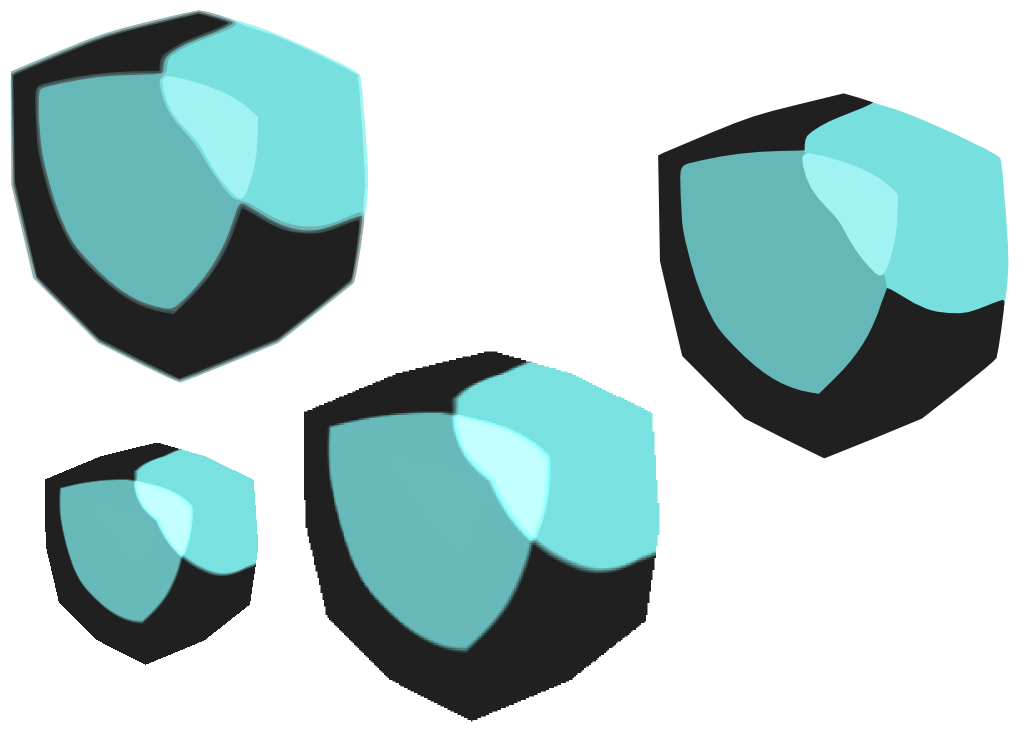|
July 2, 2006 DESCRIPTION
A graphical network config tool for AltSciOS. This tool is in development and is mainly a theoretical discussion of how a network configuration tool should work to allow the easiest and quickest use. |

|
AltSciOS is currently in development and is written in Python. It was built for the PDA of a video game, called Hack Mars. It works very much like other Posix OS (Unix, Linux, and BSD). The back end looks very different, though.
Although AltSci Net does not currently exist, a suitable replacement currently exists called Tor.
Read more »by Javantea Sept 23, 2008
What could be more boring than a 3D box rendered in Blender with a stupid material and shader? Post processing said box in Inkscape, possibly. But this fine morning (night, whichever it is) I found that both tools are doing amazing things in just the place I need them. Blender's shading and import have improved quite a bit in the latest release, which means I can import all my assets from Hack Mars to Blender. The animation works perfectly. My assets from AltSci Cell are already in Blender and now that I know how they import and export animation, I can do more work in that area. One of the main reasons I gave up on Hack Mars and AltSci Cell (both projects are on indefinite hold awaiting interest and investment) was that I couldn't import, export, or create content in Blender. That's a pretty sad state of affairs compared to MS3D (which I haven't used since the end of Hack Mars dev).

by Javantea Sept 3, 2008
I went on Amazon and found a watch. It's a timex ironman, like I said, but one of the features I liked about it has changed on all the new models, the old ones had start/stop lap/reset side by side on the front. Now they have start/lap on the front and 4 buttons around the sides. Must've decided it was cheaper and/or more likeable. I looked through 50 versions, even the "traditional" version has a single button on the front. I wonder why they didn't call me before making the decision. I really feel old now. =) As they say, "times (timex) change".
Old isn't in the years since you've been born, a lot of people age really slowly, and some people (especially meth/heroin addicts) age really quickly. I still don't consider myself old. I'm wiser than I was when I was 16 and my problems, responsibilities and possibilities are totally different, but even my situation doesn't declare me old. If I keep clinging to my youth and the youth of people I know, I'm certain to be a 35-year-old kid some day (actually that's not too far away). I think the real definition of age is how many things you've yet to do. It's a rather backwards way of looking at it and rather morbid at that, but if you consider the years ahead rather than the years behind, you can plan for what you'll be doing "then", where "then" is any time you wish to consider. If a person plans to live for 10,000 years, they will have thousands of years ahead of them, making them eternally young in comparison to how old they are bound to be. A lot closer to the present, this year I'm headed for a major breakthrough. At midnight after my birthday, I made a lot of progress. I don't know when my breakthrough is going to occur, but I sure know what I'm going to be doing until then.
Read more »
by Javantea
May 24, 2008
It seems like automatically generated steganographic-quality images are going to be a regular feature since everyone likes them so well. Today I'll just focus on the algorithm and why it works.

I started with a very non-random image used as an initial seed.

I added another very non-random image for another seed.

I added a fairly random cross hatch image as another initial seed, still not nearly good enough for steganography.

I added a very random hurl (seed 4262833791, 60% random, repeat 11) for an even random seed, almost good enough for steganography, but not good enough for plausible deniability.

Together, this is what they look like:

I then did a gaussian blur radius 50 twice and a sharpen 99:

This is the style that most people recognize as being my style.
I can then change the levels to fit my color and sharpness requirements and did a final blur to ensure the histogram is flatter:

At this point, the image is finished. Why does it work? First of all, a requirement of a steganography-quality image is random seed as seen in picture 4. A random seed alone is not good enough for plausible deniability because no one sends a picture with simple noise (unless they're talking about noise like I am now). The other seeds I added give the picture a very pronounced human texture. This helps with plausible deniability, randomness, and coverage. Adjusting the colors makes the image very pronounced so that a person can claim plausible deniability. This is a valid steganography algorithm because it adds human input, random data, blur, another non-trivial algorithm (sharpen), and a flat histogram with only a few spikes. The important parts of steganography are: anti-brute force, anti-reverse, flat histogram, plausible deniability, and easy generation. This image fits all requirements easily.
Read more »


